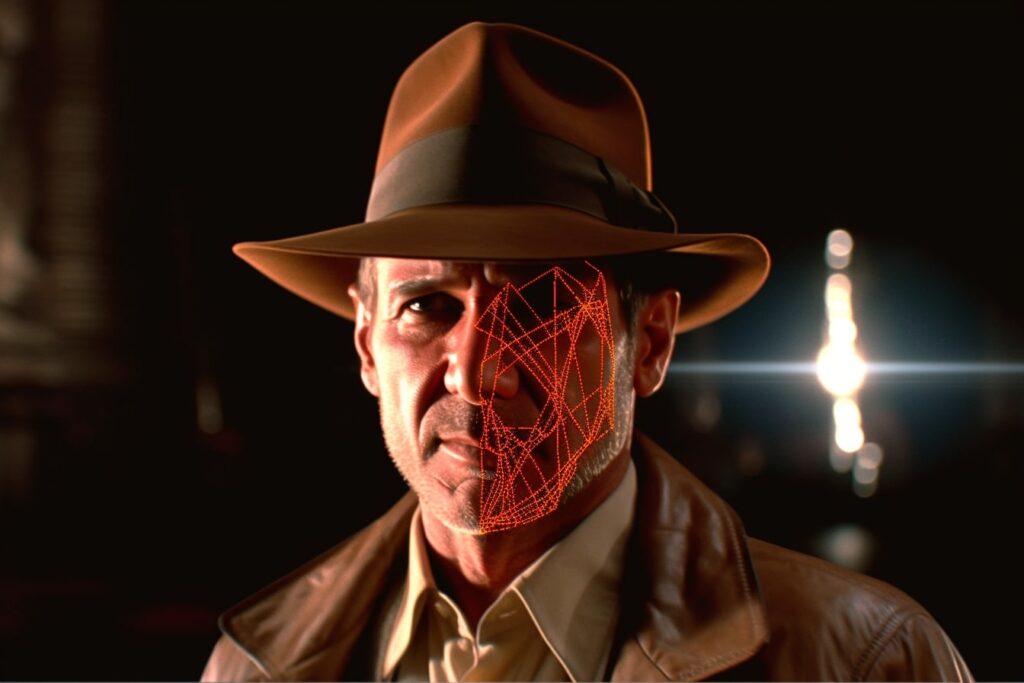A Cinematic Leap through Time with AI
In an era where technology continues to redefine boundaries, the film industry is no stranger to the sweeping wave of innovation. A compelling case in point is the use of artificial intelligence (AI) in the highly anticipated movie, Indiana Jones 5. The film, which has generated much excitement among fans and critics alike, has brought AI to the forefront in a way that adds a whole new dimension to cinematic storytelling.
The fifth installment in the Indiana Jones franchise, officially titled “Indiana Jones and the Dial of Destiny,” employs an AI system known as FRAN (face re-aging network) to create a de-aged Harrison Ford. This cutting-edge technology allows the film to portray Ford, the iconic star of the franchise, as a 35-year-old for the first 25 minutes of the movie, a testament to the transformative power of AI in the realm of visual effects.

FRAN’s remarkable application in Indiana Jones 5 highlights the complex intricacies of AI technology in film. According to the researchers behind this technology, the system requires a wealth of images of the actor in similar poses and lighting conditions from their younger years to effectively de-age the person in real time. This meant that footage of Ford playing Indiana Jones was sourced from the Lucasfilm archives to achieve the de-aging process.
Remarkably, despite the high-tech approach, the human element remained crucial. Ford had to physically act out the scenes with markers on his face to aid the AI system, blending traditional acting techniques with advanced AI processes.
The use of AI in Indiana Jones 5 was not without challenges, as shared by director James Mangold. One of the significant difficulties was getting Ford, who is 79, to convincingly move like a 35-year-old. However, the director praised Ford for his remarkable agility and ability to deliver the performance required. The production team had hundreds of hours of footage of Ford, captured in a variety of settings and lighting conditions, which facilitated the AI’s work. The result was so seamless that by the time dailies were viewed, Ford’s head had already been replaced with a de-aged version.
Indiana Jones 5, set in 1969 and opening with a scene from 1944, offers an interesting glimpse into the future of filmmaking. It is a shining example of how technology and artistry can blend to create a cinematic experience that pushes the envelope of what’s possible on screen.
The application of AI in Indiana Jones 5 marks a significant milestone in the film industry.

It exemplifies the incredible potential of AI, not only as a tool for creating stunning visual effects but also for breathing new life into beloved characters and stories. As we look towards the future of filmmaking, it’s clear that AI will continue to play a pivotal role, opening up unprecedented possibilities for storytellers and audiences alike.
Undoubtedly, the art of cinema is evolving, and with the help of AI, filmmakers are now able to redefine the boundaries of storytelling, creating immersive experiences that were once thought to be in the realm of pure imagination.

